Subphylum Vertebrata Family Todidae Scientific name Todus multicolor Rank Species | Phylum Chordata Genus Todus Higher classification Tody | |
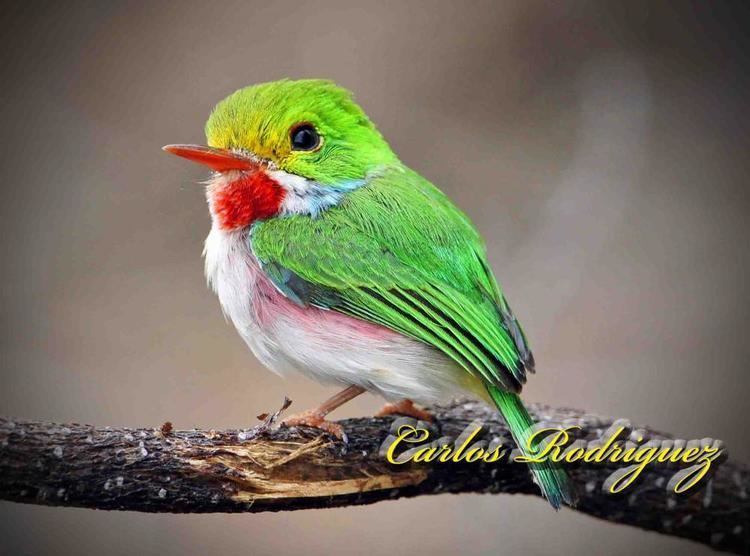 | ||
Similar Tody, Bird, Narrow‑billed tody, Cuban trogon, Bee hummingbird | ||
Cuban tody todus multicolor
The Cuban tody (Todus multicolor) is a bird species in the family Todidae that is restricted to Cuba and adjacent islands.
Contents
- Cuban tody todus multicolor
- Cuban tody cuba national park zapata cuba
- Description
- Distribution and habitat
- Behaviour
- Breeding
- Feeding
- References
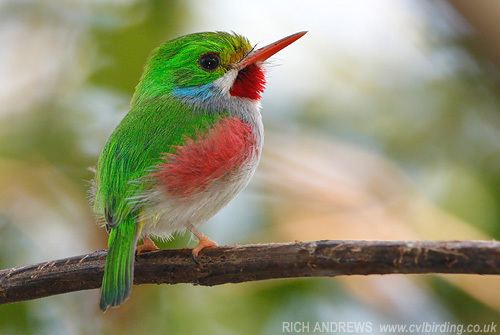
Cuban tody cuba national park zapata cuba
Description
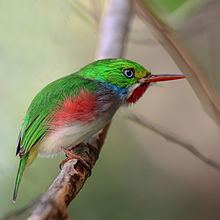
The species is characterized by small size (11 cm (4.3 in), 59 g (2.1 oz)), large head relative to body size, and a thin, flat bill. Similar to other todies, the coloration of the Cuban tody includes iridescent green dorsum, pale whitish-grey underparts, and red highlights. This species is distinguished by its pink flanks, red throat, yellow lores, and blue ear patch. The bill is bicolored: black on top and red on the bottom.
Distribution and habitat
The Cuban tody is a year-round resident of portions of Cuba and islands just off the Cuban coast. Analysis of song variation suggests that the Cuban tody is structured into two populations, corresponding to eastern and western Cuba.
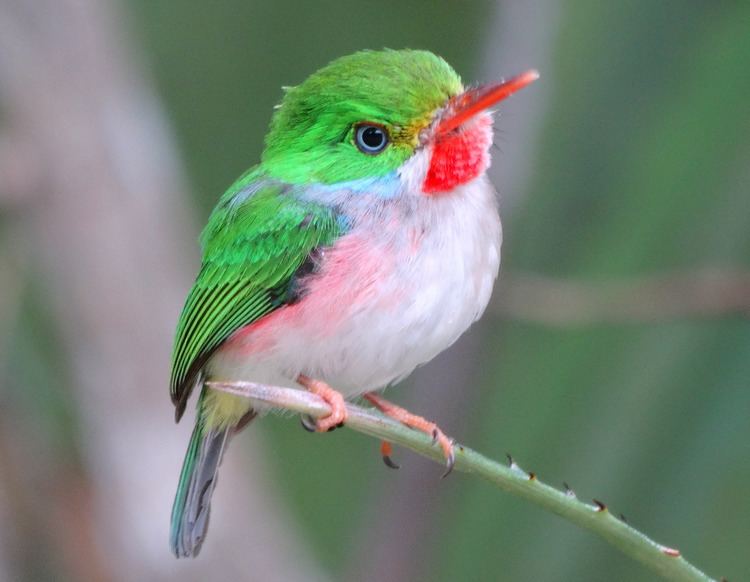
The tody, like many resident Cuban bird species, is a habitat generalist. It is known to live in dry lowlands, evergreen forests, coastal vegetation, and near streams and rivers. Cuban todies may be difficult to see; Vaurie reported, "Only one seen at the Cape, in dense underbrush, but several heard."
Behaviour
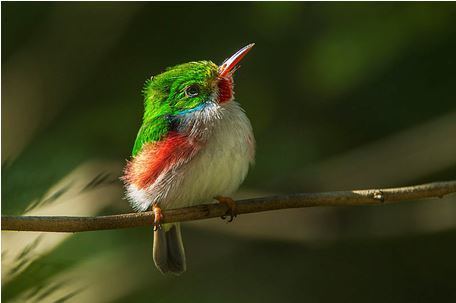
They are often seen in pairs. When perched, they sometimes repeat a peculiar short "tot-tot-tot-tot", but the most characteristic call is a soft "pprreeee-pprreeee" (which is the origin of its Cuban common name, 'Pedorrera'). Its wings also produce a whirring sound that is used during display flights.
Breeding
Nests consist of a tunnel about 30 cm (12 in) long in a clay embankment, with a terminal chamber, though sometimes they use a rotten trunk or tree cavity. The walls of the tunnel and the egg chamber are covered with a thick glue-like substance mixed with grass, lichen, algae, small feathers and other materials. Three to four eggs are laid are incubated by both parents.
Feeding
The Cuban tody diet is dominated by insects, but also may include small fruits, spiders, and small lizards. Although the birds' ecology has been little-studied, they are known to participate in mixed-species flocks. They are also food items: predators include both people in poor areas and mongoose.
